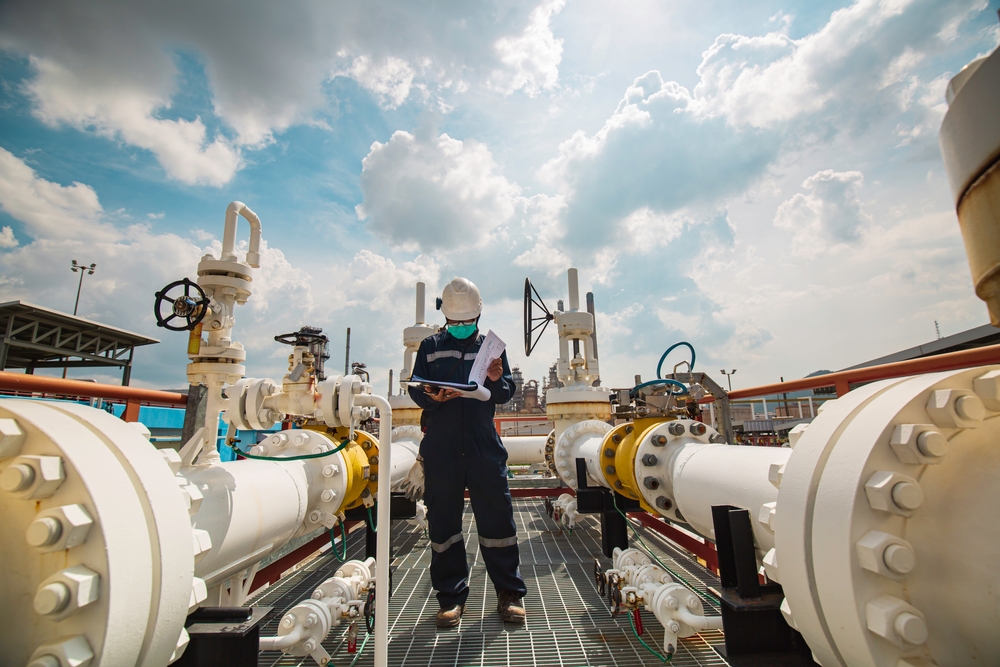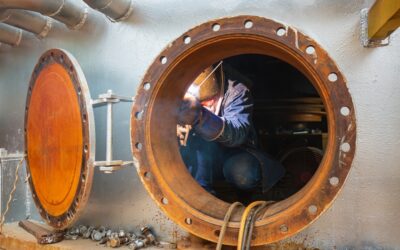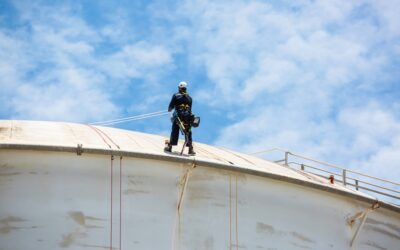Rubber linings are the unsung heroes of industrial systems—protecting tanks, pipes, and vessels from corrosion, abrasion, and chemical attack. But when a rubber lining fails, it can bring your operation to a grinding halt. Leaks, system contamination, environmental hazards, and safety risks can escalate quickly, especially in facilities handling aggressive or hazardous materials.
That’s why having a clear, step-by-step response plan is essential. In this guide, we’ll walk you through exactly what to do during rubber lining failure so you can get back up and running fast.
What To Do When Rubber Lining Problems Arise: 6 Essential Steps
When a rubber lining fails, acting quickly and strategically can be the difference between a minor interruption and a major shutdown. Whether you’re dealing with a small leak or significant rubber lining damage, these six steps will help you minimize risk, protect your team, and get your system back online.
Step 1: Know the Warning Signs of Rubber Lining Failure
Before a rubber lining failure becomes a full-blown emergency, there are often early indicators that something’s wrong. Keep an eye out for these signs to help you catch problems before they escalate:
- Cracks, blisters, or bubbling on the lining surface
- Visible leaks or seepage from tanks, pipes, or containment systems
- Sudden changes in pressure or flow during operation
- Discoloration, unusual odors, or residue around the lining
These symptoms typically signal degradation or damage to the lining—and ignoring them could lead to more extensive failures. If you notice any of the above, treat it as a red flag and begin your response plan immediately.
Step 2: Take Immediate Safety Precautions
Once you’ve identified a rubber lining leak or failure, safety comes first. A minor breach can expose your team and facility to harmful chemicals, hazardous materials, or slippery surfaces. Don’t wait—take swift action:
- Shut down the affected system to stop the flow of materials and prevent further damage.
- Alert your safety team and initiate your facility’s emergency protocols.
- Evacuate or secure the area if there’s a risk of exposure, contamination, or injury.
Always treat rubber lining failure as an emergency until a qualified professional can assess the situation. These early actions protect your team and set the stage for an effective repair process.
Step 3: Contain the Spill or Leak (If Safe to Do So)
If the situation allows and it’s safe for trained personnel to act, the next priority is containing the spill or leak to limit exposure and environmental impact. Swift containment will help to reduce downtime and clean-up costs and, of course, protect workers.
Here’s what to do:
- Use secondary containment systems already in place (such as dikes or spill berms).
- Deploy absorbent materials or spill kits to soak up leaked material and prevent it from spreading.
- Block off or redirect any floor drains or runoff paths to keep hazardous substances from entering water systems or sensitive areas.
Throughout this step, ensure your actions comply with OSHA and EPA standards. Improper spill response can lead to serious safety violations, environmental fines, and long-term reputational damage.
Step 4: Document the Damage
Once the immediate threat is under control, it’s time to document the incident. Accurate records will support your internal review and help with insurance claims, compliance reporting, and faster repair turnaround.
Be sure to:
- Take clear photos and videos of the damaged lining, any leaks, and the surrounding area.
- Record operational data before and after the failure, including pressure readings, temperature logs, flow rates, etc.
- Create a detailed timeline of what happened, when it was discovered, and what actions were taken.
The more detailed your documentation, the easier it will be for your repair team—like US Rubber—to assess the situation and recommend the best path forward.
Step 5: Contact a Qualified Rubber Lining Repair Partner
Experience matters when facing a rubber lining failure. Partnering with a professional repair team like US Rubber ensures the problem is properly assessed, contained, and fixed the right way, fast.
Here’s why working with experts is essential:
- They understand how to navigate complex rubber lining damage
- They have the tools and training to provide emergency rubber lining repair
- They know how to work quickly without compromising safety or quality
To speed up the process, be ready to share:
- Photos and videos of the damaged area
- Your documented timeline of events
- Liner specifications, system details, and any relevant site drawings
At US Rubber, we specialize in rapid response for rubber lining leaks and failures to minimize downtime and get back to business with confidence.
Step 6: Assess the Root Cause and Prevent Future Failures
Once the immediate repair is handled, we highly recommend that you investigate why the failure occurred in the first place. Understanding the root cause is key to avoiding repeat issues and protecting your operation long-term.
Work with your repair partner, like US Rubber, to:
- Identify the cause of failure, whether it was a chemical attack, abrasion, thermal cycling, age-related degradation, or poor installation
- Conduct a full inspection of the lining system and surrounding equipment for additional vulnerabilities
- Implement long-term solutions, such as upgraded rubber lining materials, preventive maintenance programs, or on-site staff training.
The goal isn’t just to fix the problem—it’s to strengthen your system against future risks and extend the life of your lining.

Don’t Wait for a Failure—Be Prepared With US RUBBER
Rubber lining failures can be disruptive, dangerous, and costly—but with the right plan in place, they don’t have to be catastrophic. By acting quickly, following safety protocols, and partnering with experienced professionals, you can minimize downtime and protect your people, equipment, and environment.
At US Rubber, we’re more than a repair service—we’re your go-to partner for emergency rubber lining repair and long-term system reliability. Whether you’re facing an urgent leak or want to proactively assess your lining’s condition, we’re here to help.
Do you think you might have a rubber lining problem? Contact US Rubber for emergency repair or a professional inspection today.







